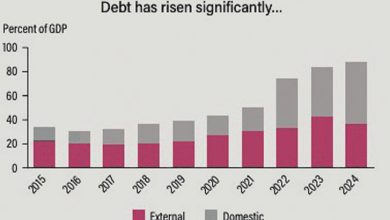Global prices drop, threat to exports
The World Bank has forecast global commodity prices to fall to their lowest level since the start of the decade, a situation that will likely pose fresh risks for Malawi’s fragile economy.
The World Bank’s Commodity Markets Outlook published on Thursday projects that global commodity prices will decline by 12 percent in 2025 and a further five percent in 2026, marking a significant reversal from the post-Covid-19 boom that had buoyed export earnings for many developing countries.

prices spell trouble. | Reuters
The bank has since warned that two-thirds of developing economies, many of which rely on commodity exports, could see their economic prospects weakened by the downturn.
The trend follows slowing global growth as well as falling oil demand and trade tensions, which have driven prices to levels not seen since 2020.
World Bank chief economist Indermit Gill is quoted in the report as having said that higher commodity prices have been a boon for many developing economies, including Malawi.
“But we are now seeing the highest price volatility in more than 50 years. The combination of high price volatility and low prices spell trouble,” he said.
Gill urged the countries to restore fiscal discipline, liberalise trade and improve the business environment to attract private capital.
For Malawi, a commodity-dependent economy with a narrow export base, the projected slump could curb vital foreign exchange inflows from key agricultural and mineral exports.
In a separate interview, economists say the expected seven percent fall in food prices next year could reduce domestic inflation, but it also threatens to suppress rural incomes as over 70 percent of Malawians rely on agriculture for their livelihoods.
Catholic University economics lecturer Derrick Thomo said in an interview on Friday that the projected decline in global food and energy prices could offer temporary relief for local households, given that these essentials make up a significant portion of their daily expenses.
“In the mining sector, declining prices for industrial metals could undermine momentum for new investments,” he said.
On his part, Scotland-based Malawian economist Velli Nyirongo said commodity price declines can hit Malawi from both the fiscal and external balance sides.
“Lower revenues from agricultural and mineral exports will reduce foreign exchange earnings and widen the current account deficit,” he said.
Nyirongo said government’s ambition to diversify exports through mineral development could be delayed.
“Falling metal prices will not only reduce potential tax revenue, but may also deter investment in mining projects,” he said.
Meanwhile, energy prices are forecast to fall by 17 percent in 2025 and an additional six percent in 2026, with Brent crude oil expected to average $64 per barrel in 2025, down from $81 in 2024.
This could provide some relief to Malawi, a net fuel importer, but the broader impact of commodity price volatility may complicate fiscal planning, according to economist Gilbert Kachamba.
“Malawi’s import bill may slightly ease, but the net effect is still negative because we earn less than we save under such global conditions,” he observed.
The World Bank noted that demand for such metals is weakening due to subdued activity in China’s property market and mounting global trade tensions.
A special focus section of the World Bank report highlights a rise in boom-and-bust cycles in commodity markets since 2020.
The bank further said these cycles have become more frequent and shorter, averaging just two years compared to the historical four-year norm.





